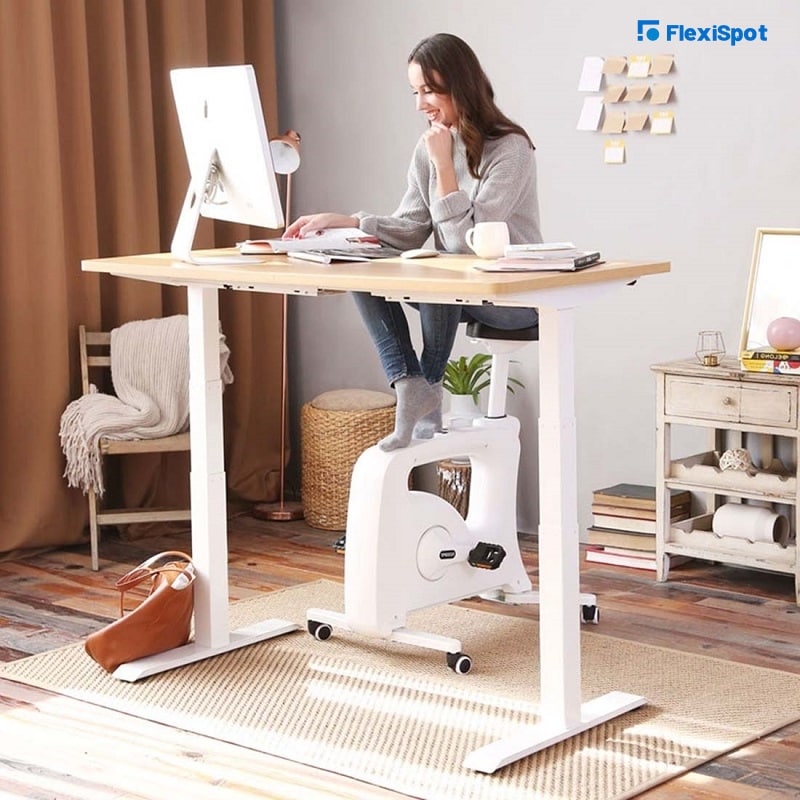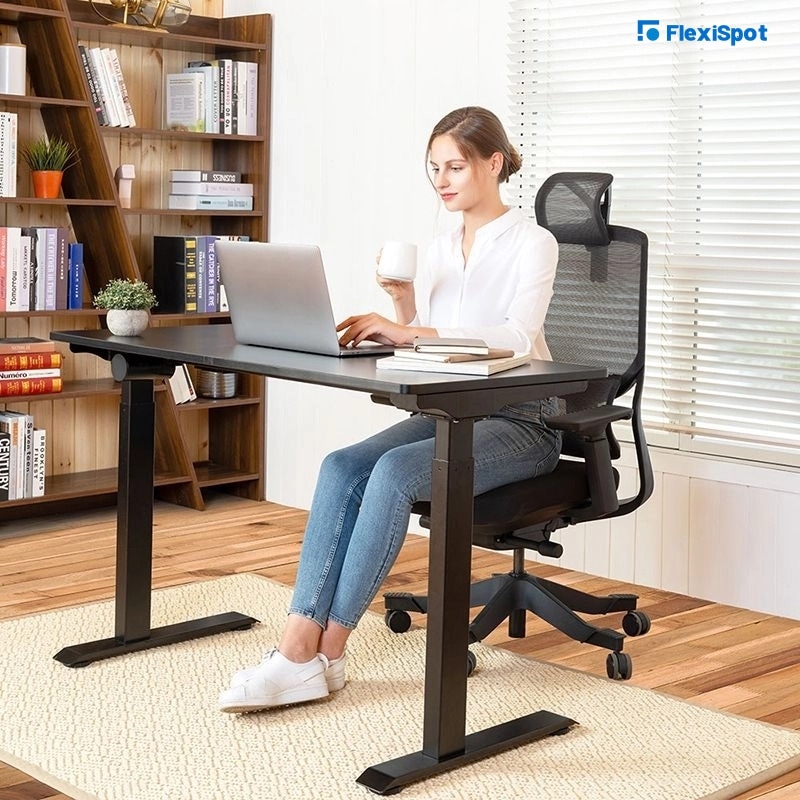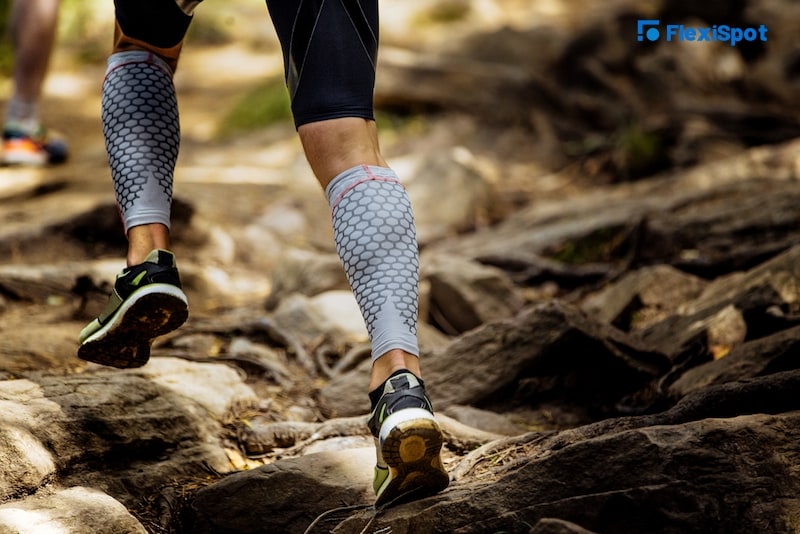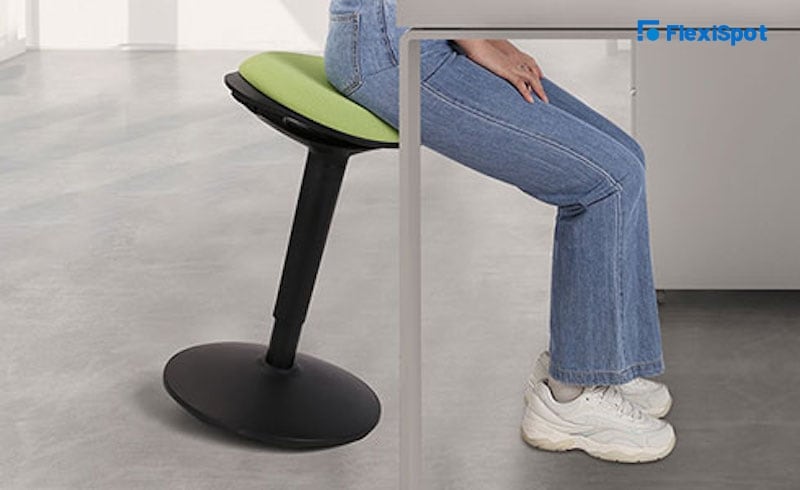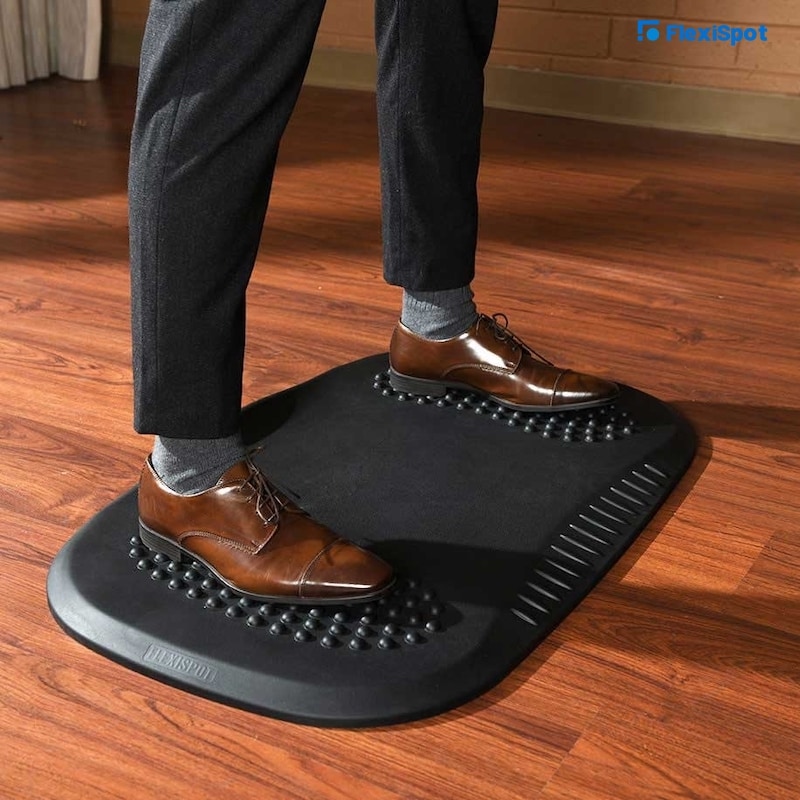Poor blood circulation is a pressing health issue that lingers in the shadow of most modern offices. Most of us don't think about circulation until we find our feet "falling asleep," or a host of other associated health issues.
For instance, some chairs pinch pressure points on your back, legs, shoulder, and other muscle groups. This leads to widespread blood pressure build-ups all over the body.
Worrying symptoms to look for include throbbing veins, cold sweats, blood clots, and an elevated risk of cardiac arrest or premature strokes. This explains why the Surgeon General continues to raise the alarm on the negative consequences of sitting down for long periods.
Getting up more often helps, but it's not enough. So, today we'll talk about other steps you can take to improve blood circulation to improve your health, focus, and workplace productivity.
How Poor Circulation Occurs
Your body's internal processes depend on the circulation of gases, minerals, proteins, and other essential nutrients. Blood plays a central role in the circulation process.
The heart ensures 5 quarts of blood course through your veins and arteries every minute. Your body has various pressure points spread through the body. It helps to think of these points as intersections linking many busy freeways.
What happens to a city if just one intersection is blocked? Well, every other roadway also experiences traffic snarl-ups, and you get a city full of angry people. This hypothetically paints a picture of how poor circulation occurs.
Possible side effects of poor circulation include:
Lower energy levels
Muscle cramps
Numbness
Bloating
Headaches
Irregular heartbeats
Twitching and other involuntary muscle reflexes
Poor eyesight
Elevated risk of developing hypertension and other heart diseases
The list is endless as you can tie so many ailments to poor circulation. But, it’s not all gloom and doom.
We like to focus on the positives! So, here’s a list of 8 things office workers can do to improve blood circulation:
Opting For a Standing Desk
Prevention is a cheaper and more effective way of staying ahead of the health problems associated with poor circulation. Our first suggestion would be to recommend that you move around more often. Getting a quality standing desk is a great place to start to stay in motion for most of the workday.
You could add an under desk bike or treadmill. Although, this may not be practice for most office setups due to the annoying noise levels. Therefore, the trick lies with how you use your standing desk.
Here are some practice considerations you could make:
Opting for a standing desk that has an advanced keypad with programmable memory buttons. This makes you get up at the right time and adequate intervals throughout the day.
Using an RSI prevention App e.g. POMODORO. Such apps allow you to schedule regular breaks to take a breather, re-hydrate, perform some stretches or get some sunlight. These apps also notify you to get back to work at the end of your health-conscious break.
Standing and Sitting In Intervals
Maintaining constant motion while at work may reduce your productivity. Sitting down to focus and be more engaged in your daily tasks helps. A comfortable and adjustable ergonomic office chair is essential for your overall plan.
Here, you’ll build on the Pomodoro principle that breaks long tasks into smaller ones and works regular breaks into the mix. You can take a 5-minute break after every 20-60 minutes. This gives some time to rejig your focus before transcending into other highly involved tasks.
Result? You get loads of time to go to the bathroom, make calls and get other tiny non-work-related tasks out of the way. This way, you get to enhance your circulation without compromising your dedicated work time.
Learn How to Adjust Your Ergonomic Office Chair
The ideal ergonomic office chair offers height and tilt-adjustment control levers. It comes with adequate padding all over, including the back and armrests. It also helps if your seat is wide enough to fit both legs without compressing the pressure points on your thighs or the back of your knees.
How Can You Adjust Your Chair For Enhanced Circulation?
1. Straighten Your Spine
Relax and settle on your seat with your back as straight as possible. Do not bend or slough even slightly as this shortens your spinal alignment interfering with blood circulation. Tilt your head slightly forward to compensate for any bending as you rest your upper body on your backrest.
2. Lay Your Feet Squarely on the Floor
Ensure your feet touch the ground and don't dangle. You can use a footrest or lower your seat if you can step on the floor. Positioning your ankles ahead of your knees also improves circulation.
3. Make Use of the Armrests
Avoid resting your arms on your desk or floating them around. Instead, you can rest them on your armrest if you need to perform operations that extend your arms for long periods. This reduces the weight and stress that causes poor circulation around your shoulders.
4. Keep Your Legs Straight
Crossing and uncrossing your legs while sitting can redistribute pressure and encourage blood pumping through the tissues in your legs. Crossing your legs or folding them reduces blood flow to your extremities (your toes). This act occurs naturally to most of us. The most important thing to remember is to uncross your legs regularly. This measure allows you to redistribute blood pressure encouraging more blood to pump into the muscle tissues and nerve endings in your leg muscles.
Staying Hydrated
News flash! Soft drinks like soda and caffeine-infused beverages promote poor blood circulation: their additives narrow veins and other blood vessels, making your heart work harder.
Your digestion system also doesn't evacuate sugar and minerals that aren't consumed by your body. So, they get stored in your bloodstream. This makes your blood thicker hence harder to circulate, and a higher risk of developing diabetes, becoming obese, and a long list of other health problems.
That's why 10 out of 10 healthcare practitioners recommend a daily dose of 8 glasses of water. Sure, that's a tall order, but reducing sugary drinks in favor of drinking more water helps.
Water dilutes your blood and helps remove all impurities. This makes it easier for your heart to do its job –Pumping blood more effectively through all your body tissues.
Use Compression Socks
Compression socks are common among athletes and other professionals that stay on their feet for long periods. These socks enclose your legs from knee to toe while supplying a constant yet gentle level of omnidirectional pressure.
Such a feature prevents varicose veins, torn blood capillaries, and swollen muscle tissues. They resemble regular socks, so you can wear them around the office without looking weird.
Compression socks come in the following variants:
Graduated Compression Socks: Offer a tighter-fitting ankle, and the compression reduces the closer you move towards the thighs.
Anti-Embolism Compression Socks: They are typically heavier and more compressive than graduated socks. Bed-ridden patients mainly use them to help them improve their circulation and avoid blood clots, inflamed veins, and muscle cramps. Therefore, they'd be overkill for office workers.
Sit Actively On a Wobble Stool
An ergonomic chair is excellent and all. But you may need to take more radical measures if you experience some of the symptoms of poor circulation. Actively sitting on a wobble stool is a fun way of approaching this issue.
A wobble stool features one titling leg that supports a comfortable cushion for your ramp. Your legs act as the 2 other legs in this tripod seat. The lack of an arm or backrest means you can’t slouch forwards or lean back. So you’re forced to use your legs to support a straight and natural posture.
Sitting in such a fashion also ensures you avoid twisting your hips or crossing your legs. Active sitting encourages you to constantly flex and relax your muscles, thereby circulating more blood through each contraction.
Use an Anti-Fatigue Mat
Standing on a hardpan surface for extended periods can be detrimental to your health. Various nerve endings all over your body link and terminate at the pressure points on the soles of your feet. So, standing on a hard surface creates a vice-like compression that harms your blood circulation.
You could feel the effects even on internal body organs like your gut, liver, and even eyes. Compressive footwear and socks might help. But you could also procure yourself an affordable Anti-fatigue mat.
Anti-fatigue mats come in all shapes and sizes. You could get an anti-fatigue mat that features message points. Such a mat improves circulation by soothing away all the stress caused by all that blood pooling in your feet.
Sure, this may sound like another cheap marketing gimmick. But don't knock it down until you’ve tried it! This could be one of those life-changing products you never knew you needed.
Lead a Healthier Lifestyle
Here’s some perspective that can help you shift into a healthier lifestyle:
“Most people resort to unhealthy habits as a crutch against the things that stress them the most in their lives.”
Anonymous
The modern workplace is a minefield of things that elicit stress, resulting in health and psychological issues, including serious problems with your circulatory system.
So, here are some things you could do to ensure you live a healthier lifestyle:
Get more “quality” sleep each night
Cut back on drinking and smoking. Go cold turkey if you can!
Eat more things containing Fatty acids & Omega 3 (fish, kale, nuts, pumpkin seeds, etc.)
Keep a neat monthly schedule by planning out all your appointments and tasks ahead of time
Make time to hang out with your mates or play with your kids & pets
Limit or cut all processed sugar from your diet
Meditation and yoga can help improve your posture, circulation and reduce stress levels
Summation
Sadly, poor circulation affects millions of office workers around the globe. Most of these people fight the symptoms through self-medication and other shortcuts instead of facing the issue head-on.
As you can see, poor circulation can result from poor office-environment adaptations; therefore, healthy habits and ergonomic considerations are more a necessity than a suggestion in combating this pandemic. Hopefully, this short article gives you a playbook to use in your fight against poor circulation.

